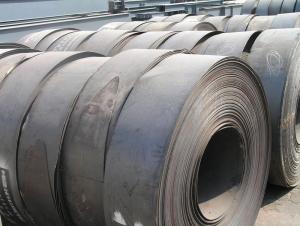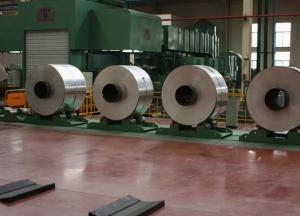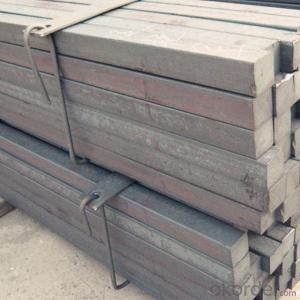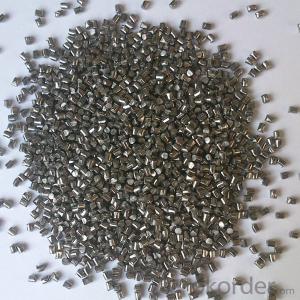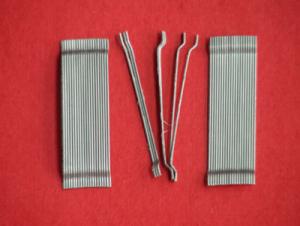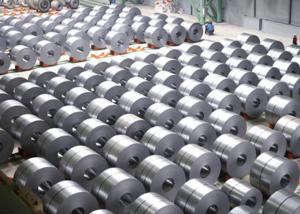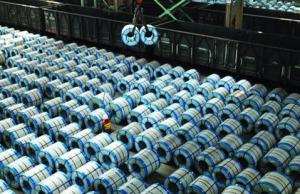High Quality Hot Rolled Steel GB, 14mm-60mm
- Loading Port:
- China Main Port
- Payment Terms:
- TT or L/C
- Min Order Qty:
- 50 tons m.t.
- Supply Capability:
- 50000 Metric Tons Per Month m.t./month
OKorder Service Pledge
OKorder Financial Service
You Might Also Like
Specification Of the Hot Rolled Steel GB,14mm-60mm
|
|
Thickness |
Width |
Length |
Coil Inside Diameter |
|
HOT ROLLED STEEL COIL |
1.50~25.0mm |
600~2000mm |
|
762mm |
|
HOT ROLLED STEEL STRIP |
1.50~20.0mm |
30~720mm |
|
762mm |
|
HOT ROLLED STEEL PLATE |
6.00~700mm |
500~4500mm |
4000~18000mm |
|
|
HOT ROLLED STEEL SHEET |
1.20~25.0mm |
50~2000mm |
0~18000mm |
|
|
HOT ROLLED STEEL CHEQUERED |
1.40~10.0mm |
900~1500mm |
0~18000mm |
|
Standard &Grade of Hot Rolled Steel GB,14mm-60mm
|
|
JIS |
ASTM |
SAE |
EN |
|
Commercial Quality |
G3131 SPHC |
A569 A635 A659 A1011 CS Type A, B, C |
1006~1025 |
10111 DD11 |
|
Drawing Quality |
G3131 SPHD |
|
1006~1010 |
10111 DD12 |
|
Deep Drawing Quality |
G3131 SPHE |
A622 A1011 DS Type A, B |
1006~1010 |
10111 DD13 DD14 |
|
General Structure (T.S.<490N/mm2) |
G3101 SS330 SS400 G3106 SM400A G3132 SPHT1 SPHT2 SPHT3 |
A36 A283 GR.C A570 GR.30~40 A1001 SS GR.30~40 |
1010~1025 |
|
|
General Structure (T.S.≥490N/mm2) |
G3101 SS490 G3106 SM490A SM490YA G3132 SPH4 |
A570 GR.45~50 A607 GR.45~70 A1011 SS GR.45,50 A1011 HSLAS GR.45~70 |
J1392 050X |
|
Definition of Hot Rolled Steel GB,14mm-60mm
Rolled to its final dimensions while it’s hot enough to scale, our hot-rolled steel is an amalgamation of the various qualities of steel. It can be in the form of plates, sheets and coils. Our Hot-Rolled Steel Sheets and Coils are applied to a wide range of uses such as automobile, electrical appliance, machinery manufacturing, container manufacturing, shipbuilding, bridge, pipeline, and receive high acclaim from our customers for its excellent quality.

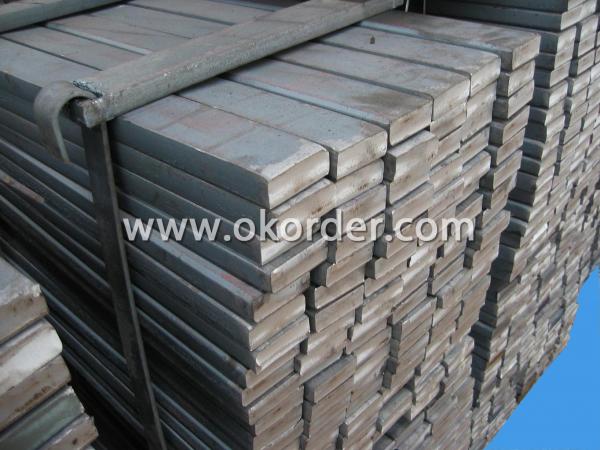
Usage/Application Of Hot Rolled Steel GB,14mm-60mm
As raw material for:
Container &Pipe Production
Carbon Structural Steel
Low Alloy Steel
High Quality Carbon Structural Steel
Atmospheric Corrosion Resistant Steel
Low Carbon Steel (Commercial Quality, Drawing Quality, Deep Drawing Quality)
Packaging & Delivery of Hot Rolled Steel GB,14mm-60mm
The packing of coils consists of anti-damp paper, PVC film, hardboard paper, steel box, strapped with steel strips, fitted with locks and edge protectors and guarantees the optimal condition of the delivered goods. Each coil can be additionally fitted with wooden/steel skids(eye to the side) or wooden pallets(eye to the sky).
Bulk shipment packed with steel belt.
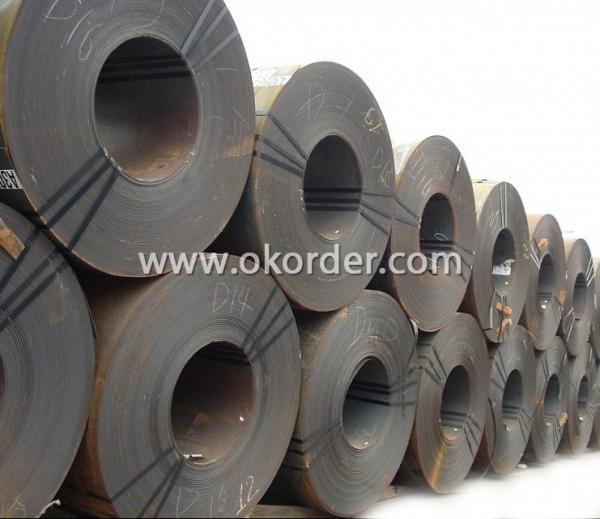
- Q:What are the different types of steel sections?
- There are various types of steel sections used in construction, including I-beams, H-beams, U-channels, angles, and flat bars. These sections have different shapes, sizes, and strengths, making them suitable for various structural applications.
- Q:What are the different types of steel plates and their uses?
- There are several different types of steel plates, each with its specific uses. Some common types include carbon steel plates, stainless steel plates, and alloy steel plates. Carbon steel plates are widely used in construction and manufacturing due to their strength and affordability. Stainless steel plates are corrosion-resistant and often used in food processing, medical equipment, and chemical industries. Alloy steel plates are made from a combination of different metals and are commonly used in high-stress applications such as aerospace and automotive industries. Overall, the choice of steel plate depends on the specific requirements of the application.
- Q:What is the process of manufacturing steel products?
- The process of manufacturing steel products involves several steps. Firstly, iron ore is extracted from mines and then refined to remove impurities. The refined iron ore is then mixed with coke and limestone in a blast furnace, where it is heated to extreme temperatures. This process, known as smelting, converts the iron ore into liquid iron. The liquid iron is then poured into molds to create ingots or further processed into steel through various methods like oxygen blowing or electric arc furnace. The steel is then shaped and formed into desired products through processes such as rolling, forging, or casting. Finally, the steel products undergo finishing processes like heat treatment, surface coating, and quality inspections before they are ready for distribution and use in various industries.
- Q:How are steel plates used in shipbuilding?
- Steel plates are used in shipbuilding to construct the hull and structural components of a ship. These plates are welded together to form the main framework of the vessel, providing strength, stability, and durability. Additionally, steel plates are used to create bulkheads, decks, and compartments, helping to compartmentalize the ship and enhance its safety and buoyancy.
- Q:What are the different types of steel staircases and handrails?
- There are several types of steel staircases and handrails available, including straight staircases, spiral staircases, floating staircases, and curved staircases. Handrails can be simple and straight or feature intricate designs and patterns. Additionally, there are variations in the materials used for steel staircases and handrails, such as stainless steel, wrought iron, or powder-coated steel, each offering different aesthetic and functional qualities.
- Q:What are the different types of steel angles and channels available?
- There are several different types of steel angles and channels available, including equal angles, unequal angles, c-channels, and u-channels. Equal angles have both sides of equal length and are commonly used for structural applications. Unequal angles have one side longer than the other and are often used for bracing or support. C-channels have a shape resembling the letter "C" and are frequently used for structural framing or as purlins in metal buildings. U-channels have a shape resembling the letter "U" and are commonly used for edging, trim, or as track for sliding doors.
- Q:How can steel products be recycled and reused?
- Steel products can be recycled and reused through a process called steel recycling. This involves collecting scrap steel from various sources, such as old cars, appliances, and construction materials, and melting it down in a furnace. The molten steel is then cast into new products, such as steel bars, beams, and sheets. This recycling process not only conserves natural resources but also reduces energy consumption and greenhouse gas emissions. Additionally, steel can be reused by refurbishing and repurposing existing steel products, such as furniture, machinery, and infrastructure, extending their lifespan and minimizing waste. Overall, steel recycling and reusing play a crucial role in promoting sustainability and circular economy practices.
- Q:What are the different types of steel products used in the manufacturing of outdoor furniture?
- The different types of steel products commonly used in the manufacturing of outdoor furniture include steel tubes, steel rods, steel sheets, and steel wire. These steel products are used to create the structural components of the furniture, such as frames, legs, and support structures. They provide durability, strength, and resistance to outdoor elements, making them ideal for outdoor furniture applications.
- Q:What are the different types of steel fasteners and their uses in the marine industry?
- In the marine industry, there are several types of steel fasteners commonly used. These include stainless steel bolts, screws, nuts, washers, and rivets. Stainless steel fasteners are preferred in this industry due to their excellent corrosion resistance properties. Bolts are typically used in heavy-duty applications, such as securing large components or structural elements. Screws are commonly used for fastening smaller components, while nuts and washers are used in conjunction with bolts to provide additional stability and prevent loosening. Rivets are another type of fastener used in marine applications, particularly for joining thin sheets of metal. They provide a secure and permanent connection, ideal for areas with high vibration or where welding may not be feasible. Overall, these steel fasteners play a vital role in the marine industry by ensuring the structural integrity, safety, and longevity of various components and structures, even in harsh saltwater environments.
- Q:How is steel used in the production of oil and gas pipelines?
- Steel is commonly used in the production of oil and gas pipelines due to its strength, durability, and resistance to corrosion. It is used to manufacture the pipes that transport oil and gas over long distances, ensuring a reliable and safe transfer of these resources. Steel pipes are able to withstand high pressure and extreme temperatures, making them well-suited for the demanding conditions of the oil and gas industry. Furthermore, steel can be easily welded, allowing for the construction of seamless and leak-proof pipelines, which are crucial for preventing any leakage or environmental hazards.
1. Manufacturer Overview |
|
|---|---|
| Location | Shandong, China |
| Year Established | 1958 |
| Annual Output Value | |
| Main Markets | Mid East Northern Europe North America Eastern Asia Africa Eastern Europe Southeast Asia Western Europe Southern Europe |
| Company Certifications | ISO 9001 |
2. Manufacturer Certificates |
|
|---|---|
| a) Certification Name | |
| Range | |
| Reference | |
| Validity Period | |
3. Manufacturer Capability |
|
|---|---|
| a)Trade Capacity | |
| Nearest Port | Tianjin; Qingdao |
| Export Percentage | 80% |
| No.of Employees in Trade Department | 100People |
| Language Spoken: | English; Chinese; Korean |
| b)Factory Information | |
| Factory Size: | |
| No. of Production Lines | |
| Contract Manufacturing | OEM Service Offered; Design Service Offered |
| Product Price Range | Average |
Send your message to us
High Quality Hot Rolled Steel GB, 14mm-60mm
- Loading Port:
- China Main Port
- Payment Terms:
- TT or L/C
- Min Order Qty:
- 50 tons m.t.
- Supply Capability:
- 50000 Metric Tons Per Month m.t./month
OKorder Service Pledge
OKorder Financial Service
Similar products
New products
Hot products
Related keywords
